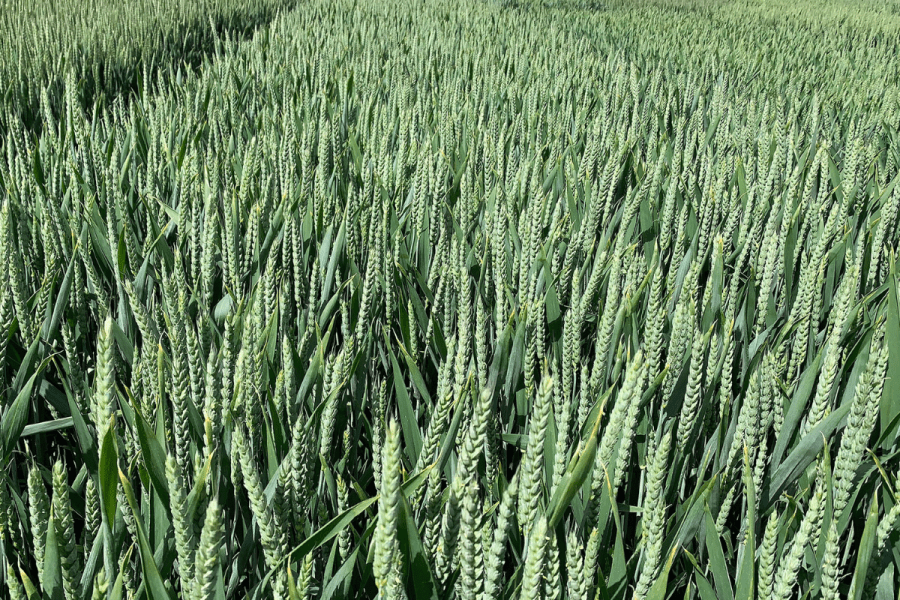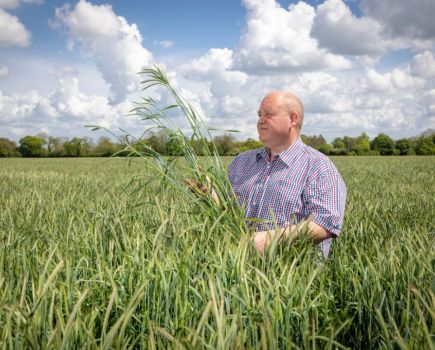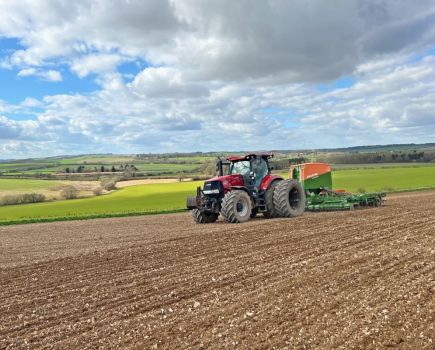It’s that time of year again – Christmas is fast approaching and therefore AHDB releases the latest iteration of its Recommended List for cereals and oilseeds. CPM reviews the changes including a BYDV-tolerant six-row hybrid winter barley and the first Group 1 winter wheat since 2017.
“The quality remains high with several exciting new additions.”
By Janine Adamson
It’s another year where the additions to AHDB’s Recommended List are select, making for a ‘leaner and meaner’ tool with shorter lists for most major crops. But as well as the obvious varietal adjustments, change has also been implemented to the RL itself.
According to Paul Gosling who manages the RL at AHDB, the aim has been to make the information easier for users to understand and reflects findings discovered during the recent RL review. “The tables feature numerous improvements such as giving greater prominence to disease ratings and agronomic traits because these were voted as the most important features.
“We’ve also added more supporting information to the booklet to explain how the RL is compiled, including how trials are undertaken.”
The RL app has been updated with a new feature which allows the side-by-side comparison of varieties, whereas the RL archive now has a tool to help users identify the year when varieties were first and last listed.
Two calls for scoping reviews have been issued to examine evidence of varietal responses under lower-input scenarios (nitrogen and fungicides, respectively). However, Paul says where some recommendations from the RL review can be applied quickly, others will take longer or not be practical or affordable. “We’re also looking at ways to maximise the value of RL data already collected to provide new insights,” comments Paul.
But what about the here and now? Paul believes this year’s leaner lists will be welcomed by many. “However, the quality remains high with several exciting new additions.”
Winter and spring wheat
Five new varieties join the winter wheat list, plus two additions for the spring. According to Paul, a stand-out is SY Cheer – the first provisional UKFM Group 1 variety since 2017.
He says it’s a considerable step forward due to its much improved disease resistance – yellow rust (7) and brown rust (6) – which is reflected in the variety’s untreated yield of 84%. “This’ll be an attractive buffer for growers stretched with fungicide timings, which is where other Group 1s have struggled in the past.” says Paul.
Baking quality test results have been good so far including gluten strength, and UKFM will confirm Group 1 classification in March 2024.
Syngenta’s Kathryn Hamlen says Cheer provides a practical combination of high grain quality, high yields and robust foliar disease resistance. “We see it as a quality wheat made simple. It’s an exciting variety,” she says.
In terms of Group 3s, Bamford (Elsoms) and Almara (Senova) join the list. Paul says Bamford is a leap ahead in yield potential, matching up to the best of the Group 4 varieties. “However, without resistance to orange wheat blossom midge, this may prove disappointing for some.”
Almara (Senova) is recommended for the North only, where it achieves good treated and untreated yields. Senova’s Tom Yewbury says the variety should appeal to all end users of soft wheat. “As well as being suitable for distilling, it meets domestic and export requirements for biscuit wheat. That makes it an all-purpose wheat and ideal for the North.”
The only new Group 4 soft variety joining the RL is Blackstone (Elsoms) which has strong disease resistance – septoria (6.2) and yellow rust (9), reflected in an untreated yield of 87%. The variety also boasts a favourable distilling report and high specific weight.
Completing the winter wheat additions is Group 4 hard variety LG Beowulf (Limagrain), which Limagrain’s Ron Granger says is much like LG Skyscraper, in that it ‘performs wherever you grow it’. “It can be drilled early or late, providing growers with a wide drilling window as a first or second wheat, on light or heavy land, and there are very few varieties that meet this criterion,” he says.
For spring wheat, the RL welcomes Group 2 WPB Mylo (LSPB) – a short variety with good disease resistance. SEW19-3003SW (Cope Seeds & Grain) also joins the list, which is a very high-yielding hard Group 4 variety. Neither appear to have significant disease weaknesses.
Winter wheat varieties no longer included are Elation, Elicit, KWS Firefly, KWS Guium, KWS Jackal, KWS Siskin, LG Prince, Merit, RGT Saki, Theodore and KWS Barrel. Spring wheat varieties making a departure are Hexham, KWS Chilham, KWS Giraffe and KWS Talisker.
Winter and spring barley
Just two new varieties join the winter barley list – SY Buzzard (Syngenta), the first six-row hybrid with tolerance to barley yellow dwarf virus (BYDV), and LG Capitol (Limagrain), a two-row feed variety.
Paul says a highlight for him is Buzzard due to its BYDV resistance, which will be of interest to growers hoping to avoid insecticide use. The variety appears to have no disease weaknesses and has the highest net blotch score (7) on the winter barley RL for 2024/25.
Syngenta’s Ben Urquhart says as well as BYDV tolerance, Buzzard maintains the other usual hybrid barley characteristics. “These include high and stable yield, good specific weight, suppression of certain grassweeds, early maturity and efficient utilisation of nitrogen fertiliser.
“It’s also early to mature with a rating of -1. An early harvest can be important for farm cash flow and to provide a good entry for winter oilseed rape,” he explains.
In contrast, the spring barley list has six new additions, all under evaluation by the Malting Barley Committee (MBC) – three varieties for brewing only, two for brewing and malt distilling, and one for malt distilling only.
Also, because the list’s layout has been improved, Paul explains it should be easier to understand how varieties are grouped and their malting status, whether that’s having full approval or being under testing.
“Marketing-wise, we’re seeing a greater focus on dual-purpose varieties which may influence grower choice,” he says.
In terms of performance, Paul believes Bounty (Agrovista) is the standout addition, particularly in the East region with 107% treated yield. Disease resistance is also a strength with mildew (8) and rhynchosporium [7] scores, however the variety is susceptible to brown rust (4).
Although NOS Gambit (Senova) and LG Aquarius (Limagrain) are lower yielding than Bounty, they offer solid disease resistance. Both are under test for brewing only along with Bounty.
In the dual-purpose camp are Belter (Agrii) and Olsen (Limagrain) which are under test for both brewing and malt distilling while offering untreated yields above the current market leaders. Both score the same for mildew (8) and rhynchosporium [6], but Belter edges forward a notch when it comes to brown rust (5).
Completing the spring barley set is NOS Munro (Senova) which yields highly in the North at 103% (treated) and is under test for malt distilling only. It’s a late maturing variety with high resistance to brackling (8).
Winter barley varieties no longer listed are Belmont, California, Funky, KWS Cassia, KWS Hawking and Surge, whereas spring barleys no longer included are Cadiz, Florence, KWS Curtis, Malvern, Prospect and Sun King.
Winter oilseed rape
The most notable update to the winter oilseed rape list is the inclusion of verticillium stem stripe (formerly verticillium wilt) ratings. Paul explains this is in response to increasing incidences of the disease. “Although it’s sporadic it’s very hard to control with no registered fungicides. Varieties are rated as either susceptible (S), moderately resistant (MR) or intermediate (I).”
Ratings for phoma stem canker have also been ‘reset’ to correct a drift during recent years. “But this doesn’t reflect a change in resistance status, rather an improvement in the calculation process,” stresses Paul.
The three new UK-recommended hybrid varieties joining the RL are LG Armada, LG Academic and LG Adeline (all Limagrain). Liam Wilkinson from the company says Armada is the first of Limagrain’s seventh generation of hybrids, bringing new maintainer and restorer lines to their OSR portfolio.
“Ambassador-like’ in its growth habit, Armada has strong autumn vigour, is robust, with good adaptability to all regions of the UK,” he says.
Recommended for the East/West is hybrid variety Dolphin (DSV) which offers a high yield of 106% (treated). A stand-out feature is it’s one of only seven varieties to be rated as ‘moderately resistant’ to verticillium, plus has a high score for stem canker (7).
For those seeking a UK-recommended conventional variety, Pi Pinnacle (Grainseed) has joined the list. The variety boasts a high light leaf spot score (7) but is susceptible to stem canker (4).
To conclude the additions, Miraculix CL (DSV) is on offer for the North region – a Clearfield variety with tolerance to imidazolinone herbicides. Miraculix CL has a high stem canker score (7) and pod shatter resistance.
On the OSR departure list – Crossfit, DK Expectation, DK Imprint CL, Flemming, LG Antigua, PT279CL, Respect and V 316 OL.
Spring oats
The spring oats list features two new varieties – husked Asterion (Saaten Union) and naked oat Ovation (Senova). Asterion offers good treated (102%) and untreated (97%) yields, good disease resistance and high kernel content (73.2%). In contrast, Ovation is notable for its relatively high untreated yield (68%) and solid mildew score (6).
No longer listed are Aspen, Delfin and Kamil. There are no additions to the winter oats list.
This article was taken from the latest issue of CPM. For more articles like this, subscribe here.
Sign up for Crop Production Magazine’s FREE e-newsletter here.




